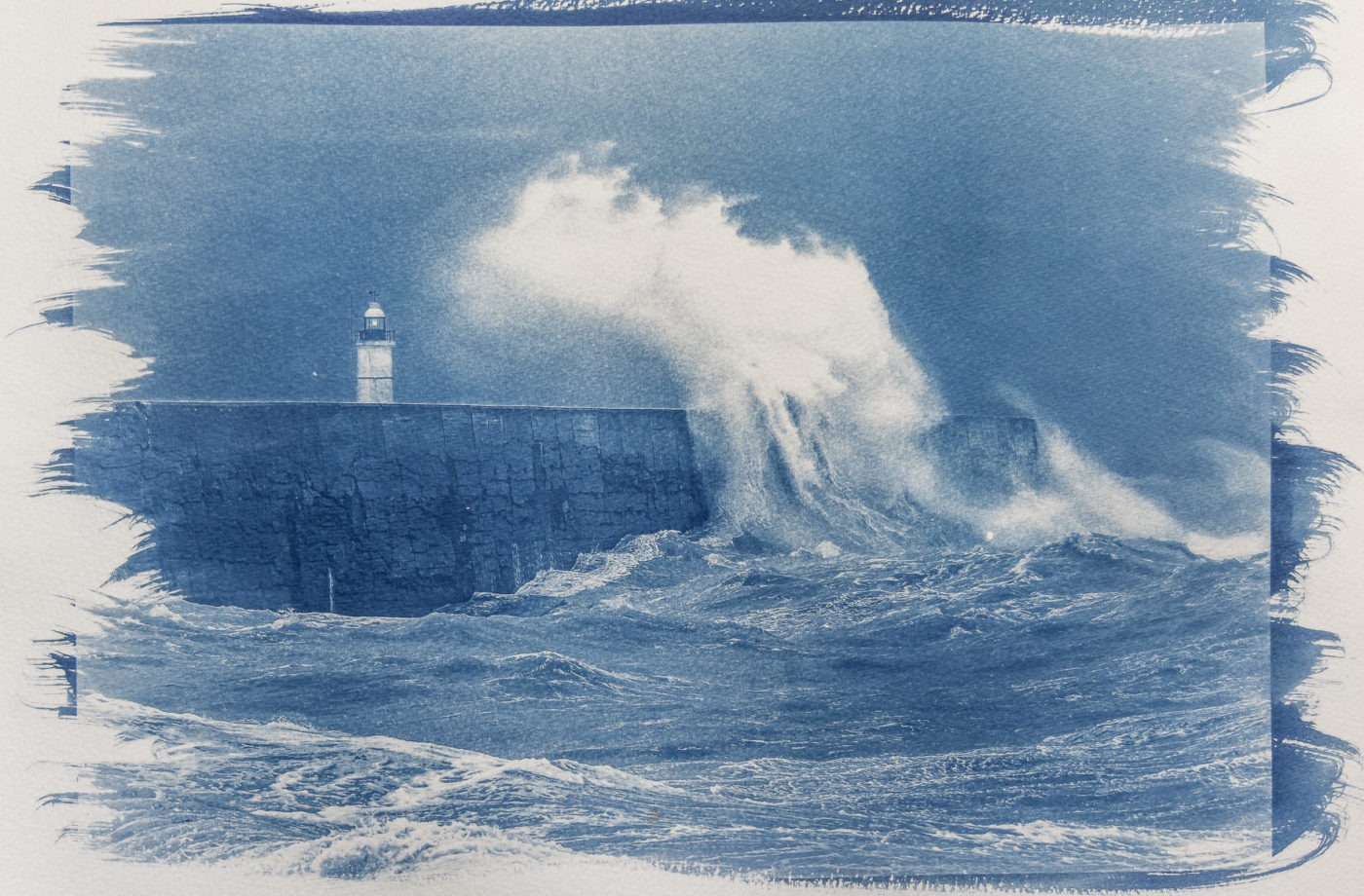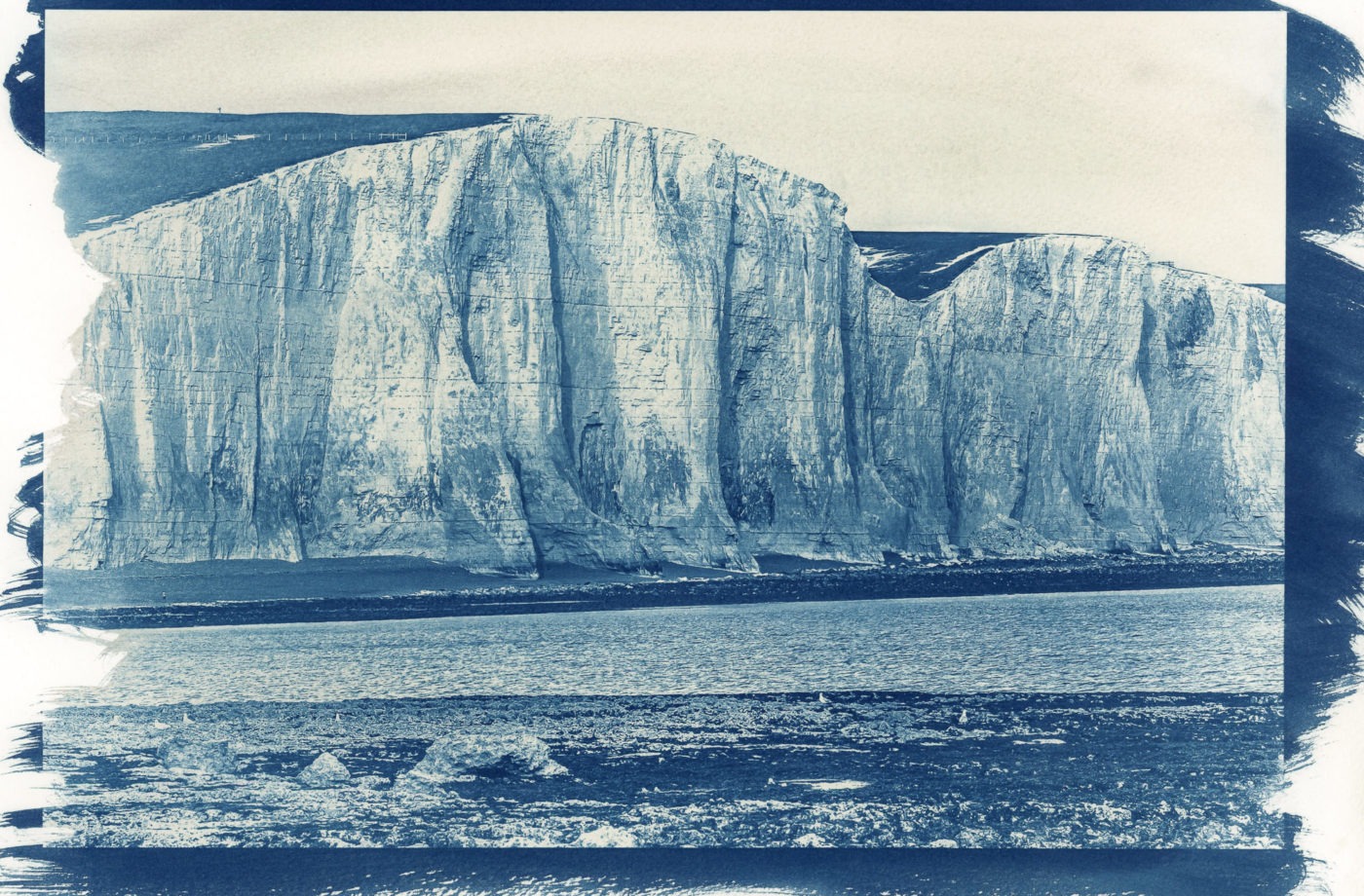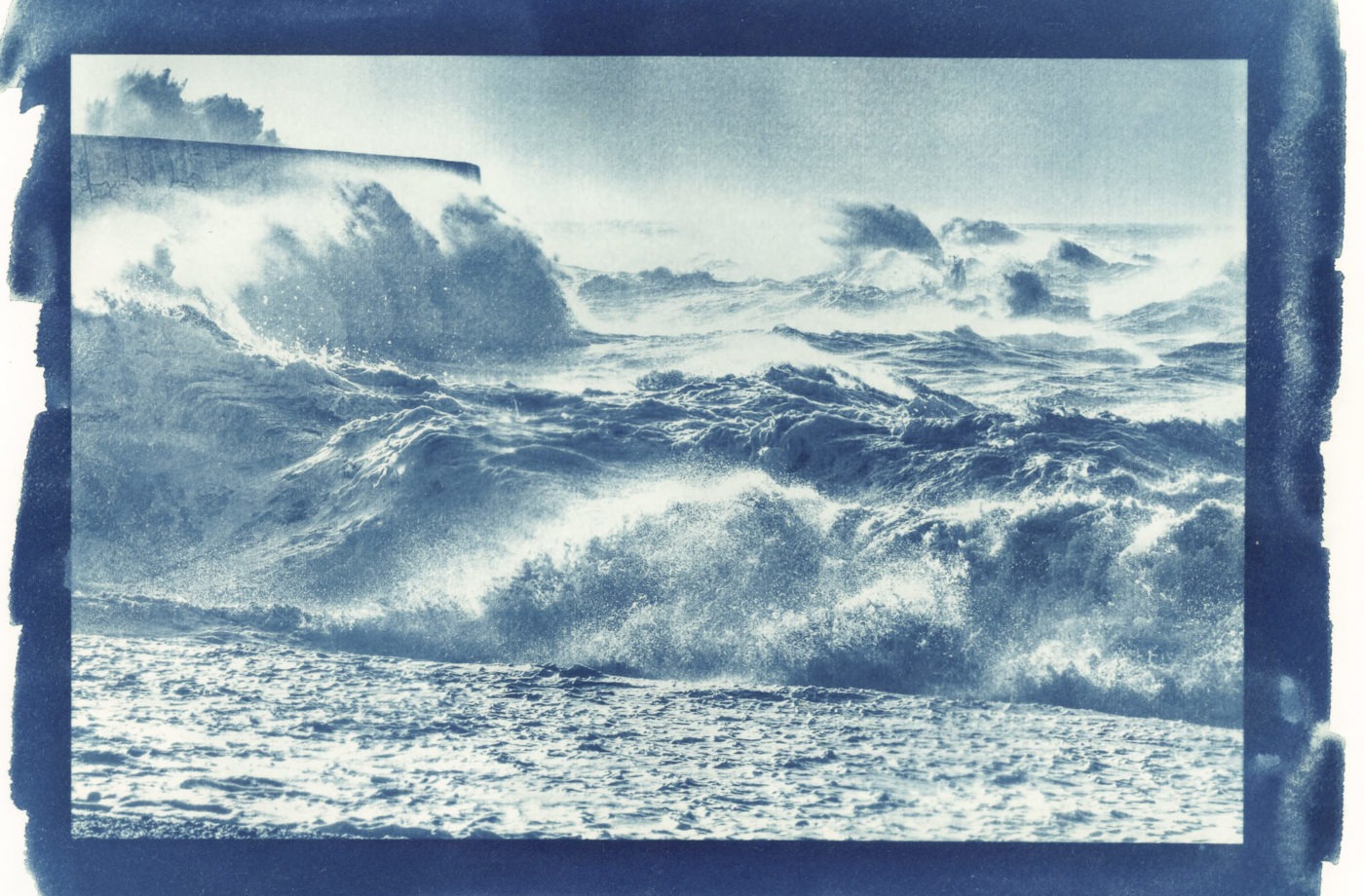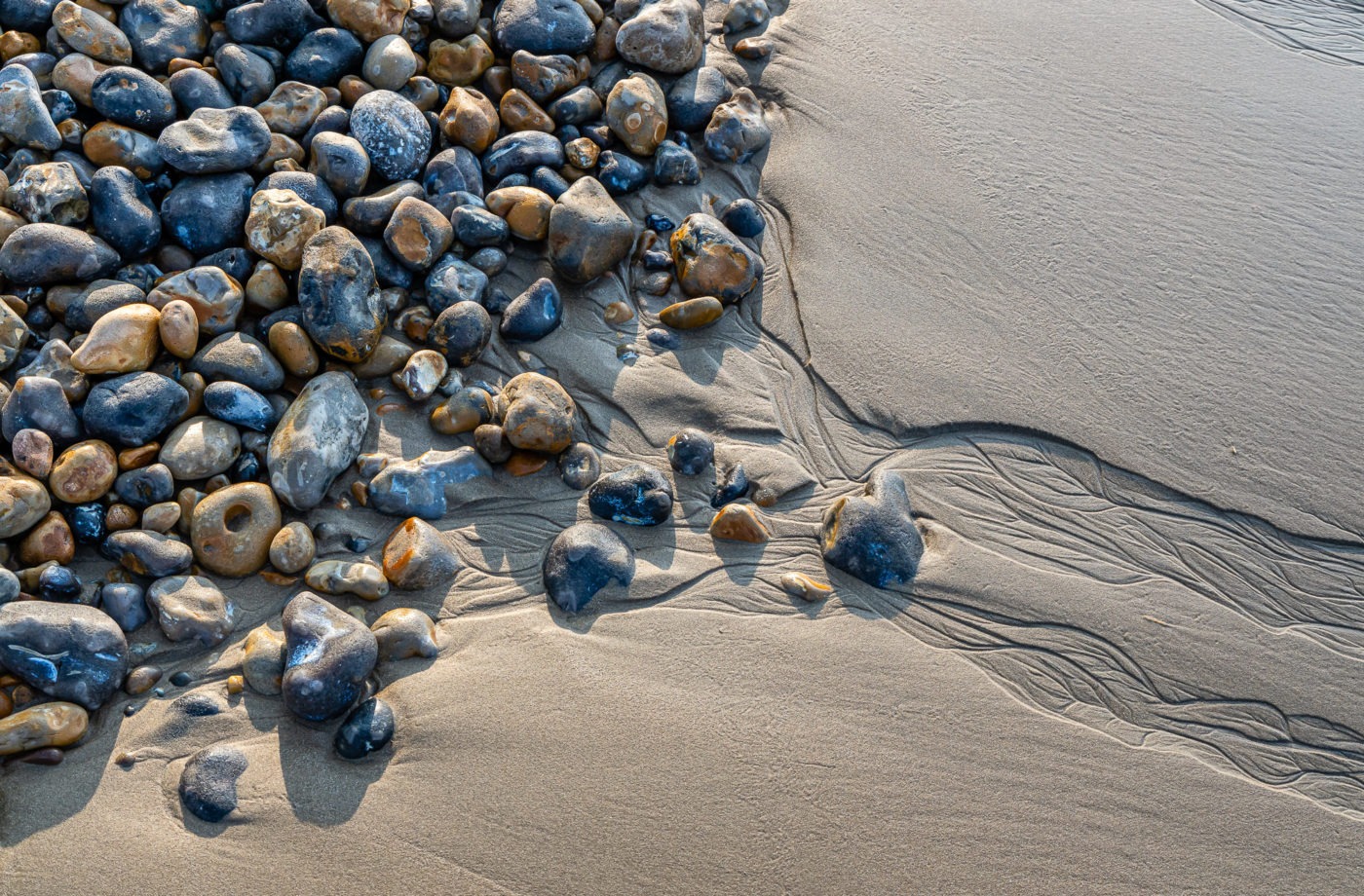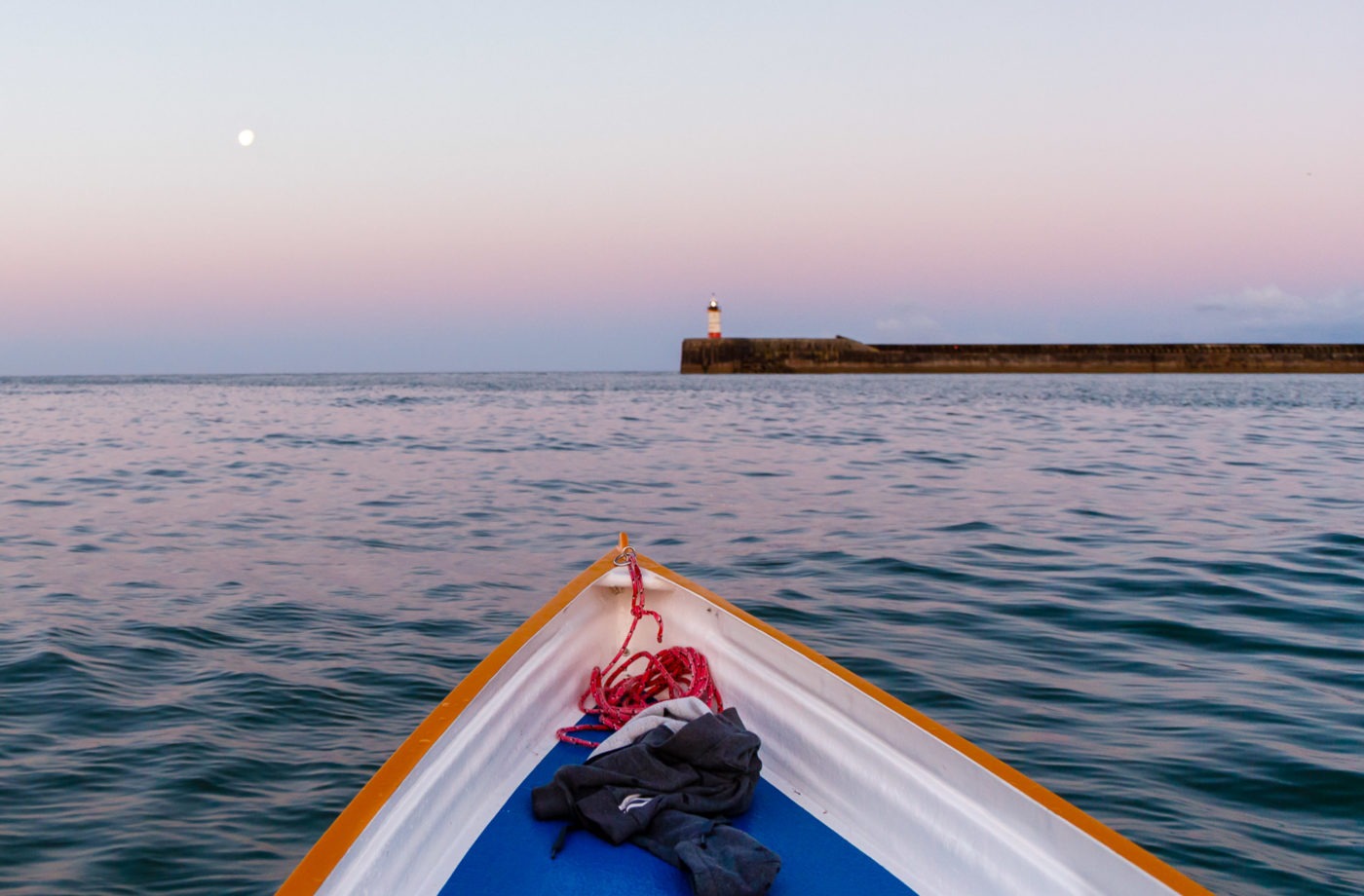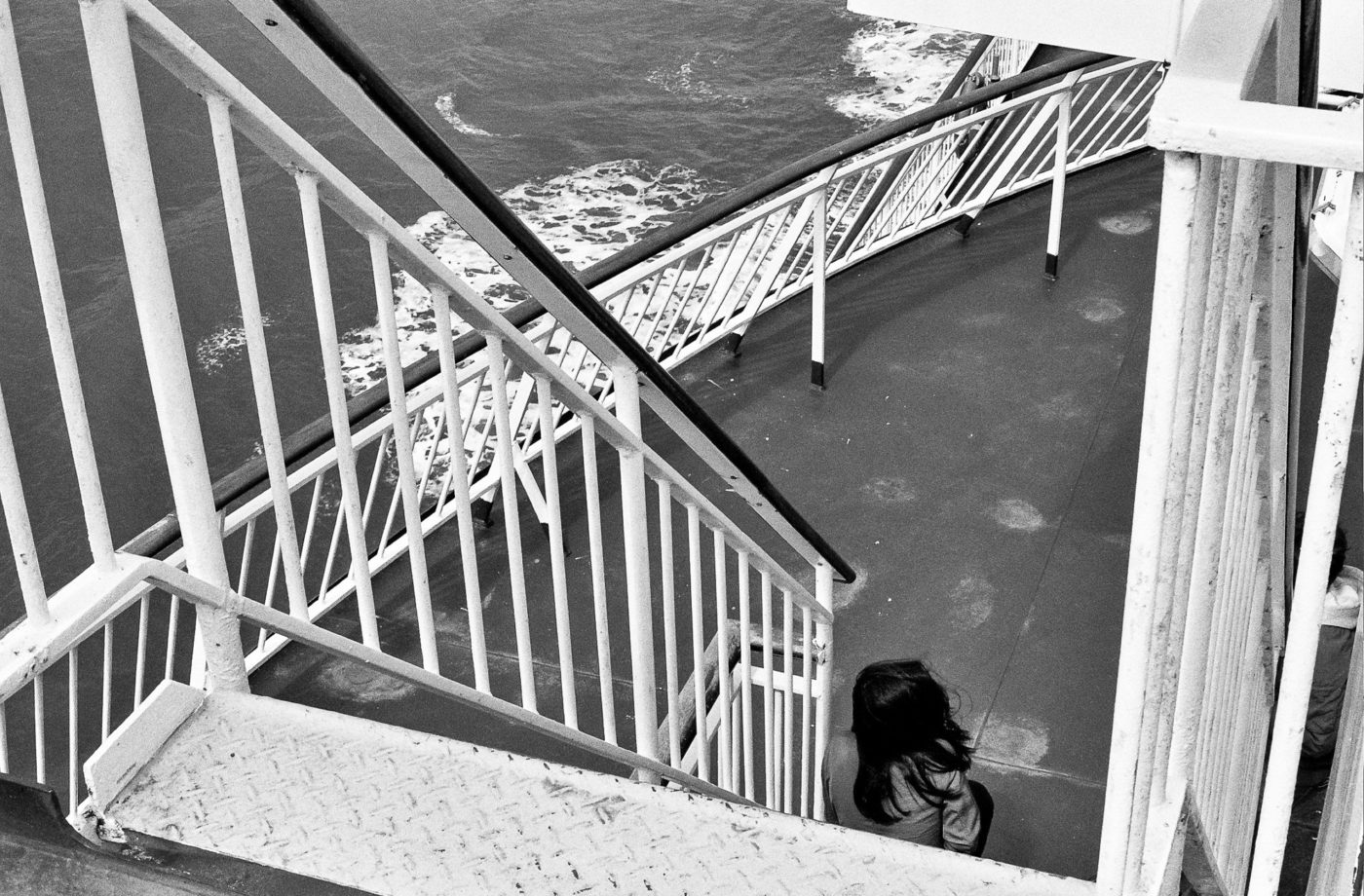Stormy cyanotype seas
As the days brighten and lengthen, I have had renewed energy to focus on new projects, so I am pushing ahead with my book of sea and shore cyanotypes. My ideas are finally crystallising around how the book will work. I will keep you posted on how it goes and when it will become available.
Making cyanotypes is a rather lengthy process. Printing out my negatives onto acetate film takes about half an hour each. I make a contact print by placing the acetate over paper that I have coated with cyanotype solution which is then exposed to ultraviolet light for around 40 minutes. After the print has been washed in water, I leave it to dry in sunlight, which helps to deepen and enrich the tones.
This print is one of my favourites. It feels to me like it comes from another era, although it was taken 18 months ago just down the road in the industrial setting of Newhaven harbour. The ominous force of that wave against the pier brings to my mind seafaring exploits of past centuries, and the terrible storms and deadly shipwrecks associated with them.
All my hand-printed cyanotypes are available to buy. Get in touch for more information. You can find more of my cyanotypes here, and my book of Lewes Bonfire cyanotypes here.
Please get in touch if you have a workplace, an event, a celebration, a portrait or a building project you would like to have photographed.
